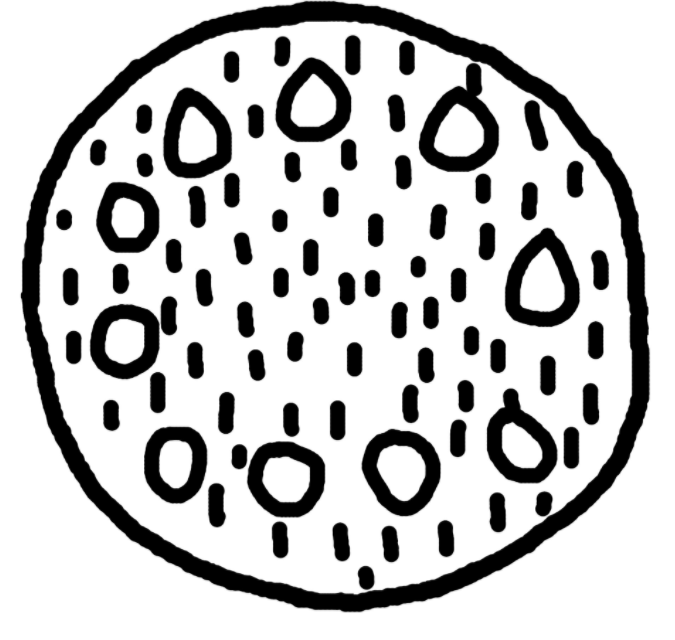xalli (Mdz40r)
This element has been carved from the compound sign for the place name, Xallan, which originally consisted of this representation of xalli, sand, plus the locative suffix, -tlan. We replaced the tlantli (teeth) at the center of the circle with more black dots, approximating a single glyph for sand.
Stephanie Wood
The dots likely refer to grains of sand (xalli), whereas the small circles may refer to larger grains or small rocks that can be mixed in with sand, seemingly what Alonso de Molina referred to as "piedra arenisca." While it fills a circle here, xalli can take different forms in different attestations of the sign, much as chalk (tizatl, https://aztecglyphs.wired-humanities.org/content/tizatl) will do.
Stephanie Wood
c. 1541, or by 1553 at the latest
Stephanie Wood

Crystal Boulton-Scott made the SVG version of the image.

sand
la arena
Stephanie Wood
Codex Mendoza, folio 40 recto, https://digital.bodleian.ox.ac.uk/objects/2fea788e-2aa2-4f08-b6d9-648c00..., image 90 of 188.
The Bodleian Libraries, University of Oxford, hold the original manuscript, the MS. Arch. Selden. A. 1. This image is published here under the UK Creative Commons, “Attribution-NonCommercial-ShareAlike 3.0 License” (CC-BY-NC-SA 3.0).



